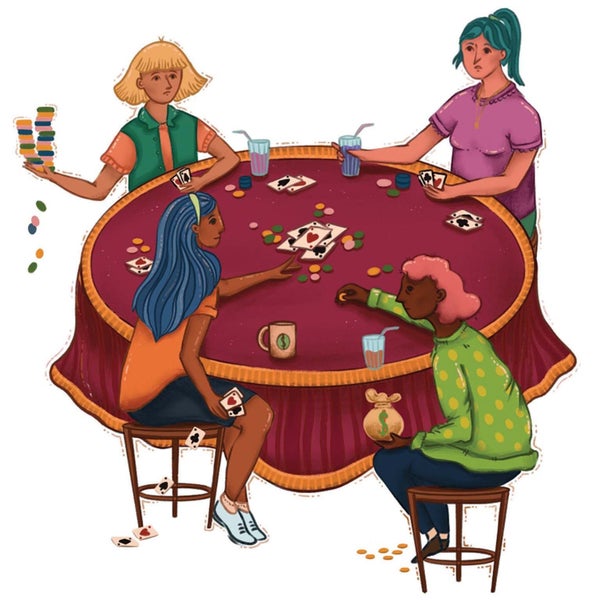Groups of engineers at Volkswagen, working on cars sold between 2008 and 2015, faked engine emissions levels during laboratory tests so the cars could meet low pollution standards. But when the cars hit the road, their real emissions were much higher. The scam, dubbed “Dieselgate,” had severe consequences. The additional pollution in the U.S. alone could contribute to dozens of premature deaths.
Dieselgate is one example of what researchers call collaborative dishonesty. Often discussion of collaboration emphasizes its advantages: it helps people solve complex problems they could not address alone, for instance. But there are also situations in which group work can be fertile ground for dishonest behavior.
My colleagues and I pooled data from many past studies to understand the forces that shape and underlie group dishonesty. We analyzed 34 research projects that involved more than 10,000 participants altogether. In these experiments, scientists asked people to play economic games or carry out decision-making tasks while part of a team. The specific instructions varied from one study to the next, but across experiments, participants could gain money through honesty and teamwork.
On supporting science journalism
If you're enjoying this article, consider supporting our award-winning journalism by subscribing. By purchasing a subscription you are helping to ensure the future of impactful stories about the discoveries and ideas shaping our world today.
They also had opportunities, however, to earn additional money as a group by lying. For example, in some tasks, teams received a payout based on the number of puzzles they solved together; participants could lie and inflate the quantity they had deciphered. Across all studies and tasks, we found that groups tended to lie. On average, they earned 35.6 percent of the extra profits available to them above what they could make from simply telling the truth.
We also showed that collaborative dishonesty is contagious and escalates. Several studies we analyzed involved asking pairs of people to roll dice over multiple rounds. One person rolled a die in private and then reported the outcome. Their partner learned about that report and then rolled an independent die before reporting their own outcome. If both teammates claimed to have rolled the same number, they received a payout: for example, a one-one double might mean each person got $1, a two-two double could mean $2 each, and so on. Pairs could choose to be honest and receive payment only when they truly rolled doubles. But over the course of many rounds, some pairs would be tempted to falsely declare a higher or matching roll for greater or more frequent payouts.
For these studies, we first identified whether any participants were obviously deceitful. When the data suggested that certain people reported only sixes—the highest roll possible—or only doubles in all rounds of the task, we labeled these improbably lucky rollers as brazen liars. (Because the chance of getting sixes or doubles in 20 rounds, the most common number of rounds in the task, is very small—less than 0.001 percent—we felt confident about this classification.)
The brazen liar’s behavior influenced their partner. People were more likely to lie when their partner did. This dishonesty also grew over time. In later rounds, compared with earlier ones, the first person to roll a die was more likely to report a higher roll, and their partner was more likely to report a double.
The good news is that there was a limit to the deceit. In puzzle tasks, for instance, most teams did not pretend to solve every puzzle presented. And when studies added ethical costs for dishonesty, such as by informing people that lies would harm other participants or have negative consequences for a charity donation, groups lied less. On top of that, we discovered that the gender and age of the group members mattered. The more women a group had and the older its members were, the less the group lied. We are still investigating reasons for this pattern.
Our findings point to specific ways people could encourage honesty when groups work together. For instance, our discovery that collaborative dishonesty is contagious suggests that people should try to detect and act on early signs. Managers could implement zero-tolerance policies toward even small acts of deceit to deter its spread. To increase early disclosure of dishonesty, they could put policies in place that forgive whistleblowers for their part in wrongdoing when they come forward about dishonest deeds. And because groups are more honest when they believe others are harmed by their lies, highlighting the negative consequences of dishonesty more prominently may help curb it.
